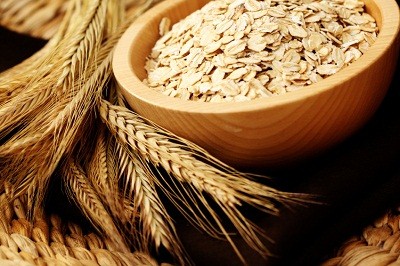Just because a food product is brown or the packaging states that it is high in fibre does not mean that the product is wholegrain. It is important to read the nutrition label to correctly identify whole-grain food products before putting them in your shopping basket/trolley. Read on to find out more!
How do you recognise wholegrain food?
When shopping, look at the following information to determine if the product is wholegrain:

1. Product name
Descriptive words such as softmeal, 7 grain, multi-grain or enriched do not necessarily mean the product is wholegrain. Instead, as a general guide, look out for the word whole as in wholemeal, wholegrain or wholewheat.
Wholegrain versus Wholemeal
You may wonder what the difference is between wholegrain and wholemeal. Wholemeal refers to wholegrains that have been milled to a finer texture, but still have their three layers (bran, endosperm and germ) intact. This means that wholemeal food products are also wholegrain. Examples of wholemeal products are wholemeal bread, wholemeal spaghetti, etc.
Similarly, instant oatmeal is also a wholegrain though it's flaked, steamed, cracked or ground as it has all three layers intact.
2. Ingredient list
The ingredient list and the nutrition information panel (NIP) will not tell you the amount of wholegrains present in the food. Instead, the ingredient will list the wholegrain as an ingredient e.g. wholewheat flour or whole oats. To look for a wholegrain product, the whole should ideally be listed as the first or second ingredient. But there are also products that are made with some wholegrains, and the word whole is stated further down the ingredients list. These food may also qualify as a wholegrain food.
3. Fibre content
Just because a product is high in fibre does not necessarily mean that it is wholegrain. Food enriched or added with wheat or bran may be high in fibre but they are not wholegrain unless wholewheat or other wholegrains are used in the product.
4. Colour and texture
Don't judge a grain by its colour. Just because the bread is brown doesn t mean it is made of wholegrains. Some bread or crackers may be brown because molasses or caramel colouring may have been added. Don t forget that many wholegrain products such as cereals are light in colour. Also, wholegrain food are not always dry and gritty. You will be pleasantly surprised that some wholegrains are light and flaky like cereal grains while some may be dense with an enjoyable nutty flavour.
Wholegrain Healthier Choice Symbol
Remember the Healthier Choice Symbol (HCS)? Do you recall that the HCS can help you look out for healthier options while grocery shopping? This is because products that carry the HCS are generally lower in total fat, saturated fat, sodium and sugar, while some are higher in fibre and calcium compared to the similar product within the same food category.
From now onwards, you can also start looking out for the Higher in Wholegrain Healthier Choice Symbol! Take a look at the list of products with Higher in WholeGrain HCS.
Look out for the Wholegrain HCS Symbol
To qualify for this symbol:
- Bread and breakfast cereals should contain at least 25% wholegrains
- Brown rice or oats should contain 100% wholegrains
- Vermicelli (bee hoon) should contain at least 80% wholegrains
- Biscuits should contain at least 30% wholegrains
So, when you choose a product with the Wholegrain HCS, you can be assured that your chosen product is a healthier option, with additional wholegrain benefits.
So Remember...
- Look out for the word "whole" as in wholemeal, wholegrain or wholewheat on a product to ensure it is a wholegrain product. The wholegrain should ideally be listed as the first few ingredients on the product's ingredients list.
- Look out for the Wholegrain Healthier Choice Symbol logo which helps you to identify healthier choices which are high in wholegrains.
- Look out for wholegrain dishes at your favourite restaurant for a healthier dining experience.
Read these next:

Ask
HealthHub AI
HealthHub AI
Beta

























